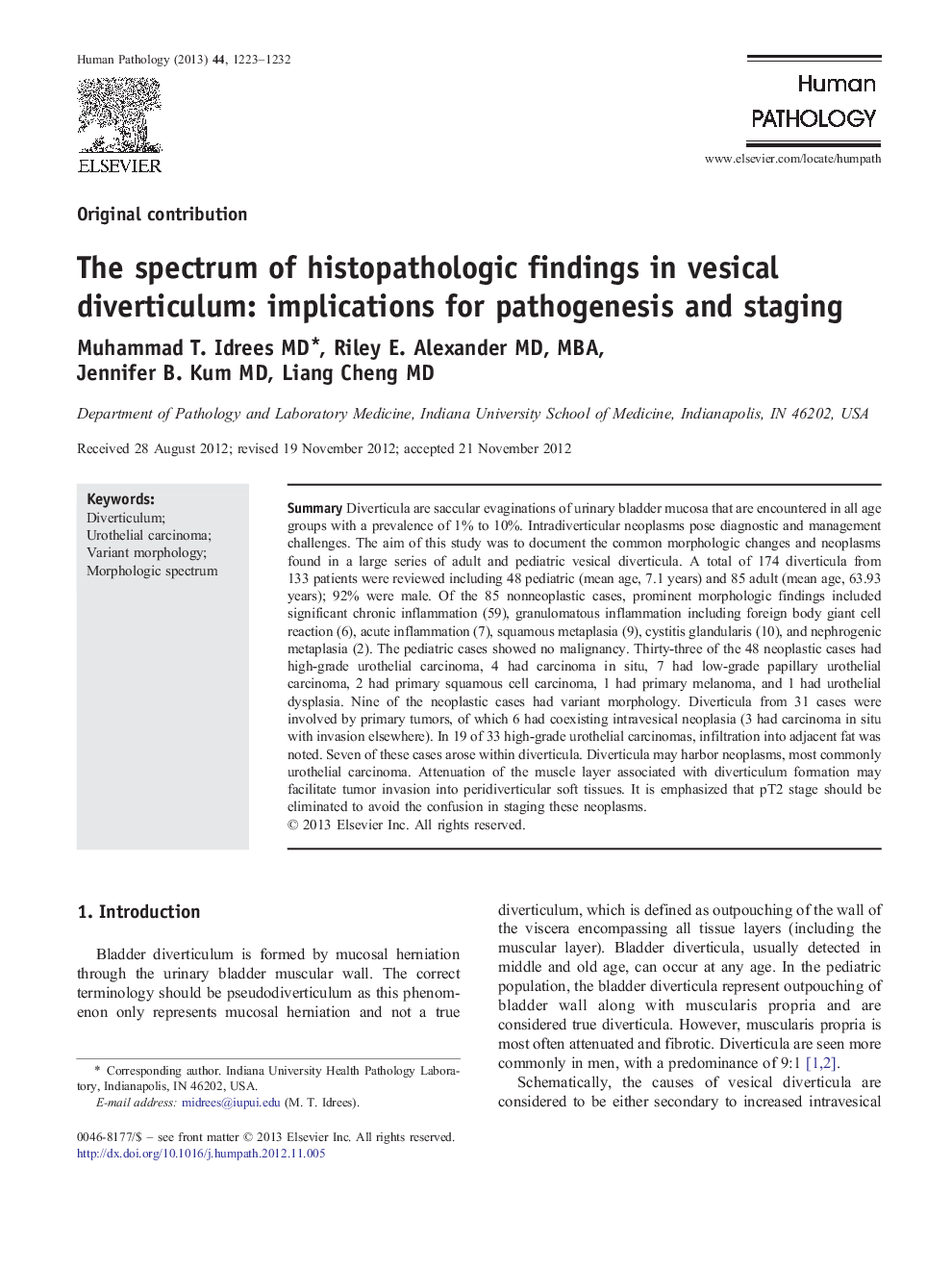| Article ID | Journal | Published Year | Pages | File Type |
|---|---|---|---|---|
| 6216001 | Human Pathology | 2013 | 10 Pages |
SummaryDiverticula are saccular evaginations of urinary bladder mucosa that are encountered in all age groups with a prevalence of 1% to 10%. Intradiverticular neoplasms pose diagnostic and management challenges. The aim of this study was to document the common morphologic changes and neoplasms found in a large series of adult and pediatric vesical diverticula. A total of 174 diverticula from 133 patients were reviewed including 48 pediatric (mean age, 7.1 years) and 85 adult (mean age, 63.93 years); 92% were male. Of the 85 nonneoplastic cases, prominent morphologic findings included significant chronic inflammation (59), granulomatous inflammation including foreign body giant cell reaction (6), acute inflammation (7), squamous metaplasia (9), cystitis glandularis (10), and nephrogenic metaplasia (2). The pediatric cases showed no malignancy. Thirty-three of the 48 neoplastic cases had high-grade urothelial carcinoma, 4 had carcinoma in situ, 7 had low-grade papillary urothelial carcinoma, 2 had primary squamous cell carcinoma, 1 had primary melanoma, and 1 had urothelial dysplasia. Nine of the neoplastic cases had variant morphology. Diverticula from 31 cases were involved by primary tumors, of which 6 had coexisting intravesical neoplasia (3 had carcinoma in situ with invasion elsewhere). In 19 of 33 high-grade urothelial carcinomas, infiltration into adjacent fat was noted. Seven of these cases arose within diverticula. Diverticula may harbor neoplasms, most commonly urothelial carcinoma. Attenuation of the muscle layer associated with diverticulum formation may facilitate tumor invasion into peridiverticular soft tissues. It is emphasized that pT2 stage should be eliminated to avoid the confusion in staging these neoplasms.
